She is the stuff of legends, a hero in her own right, a hull of iron, and undefeated in battle. A mighty sailing ship that spans three centuries and is still able to move under her power, she’s called Old Ironsides, but her real name is the US Frigate Constitution (44). And while the history of the Constution extends both before and long after the Anglo-American War of 1812. And while the ship is not a fort, person, battle, or location, it played a major role in the war and added to the overall mythos surrounding the war in these past 200 years.
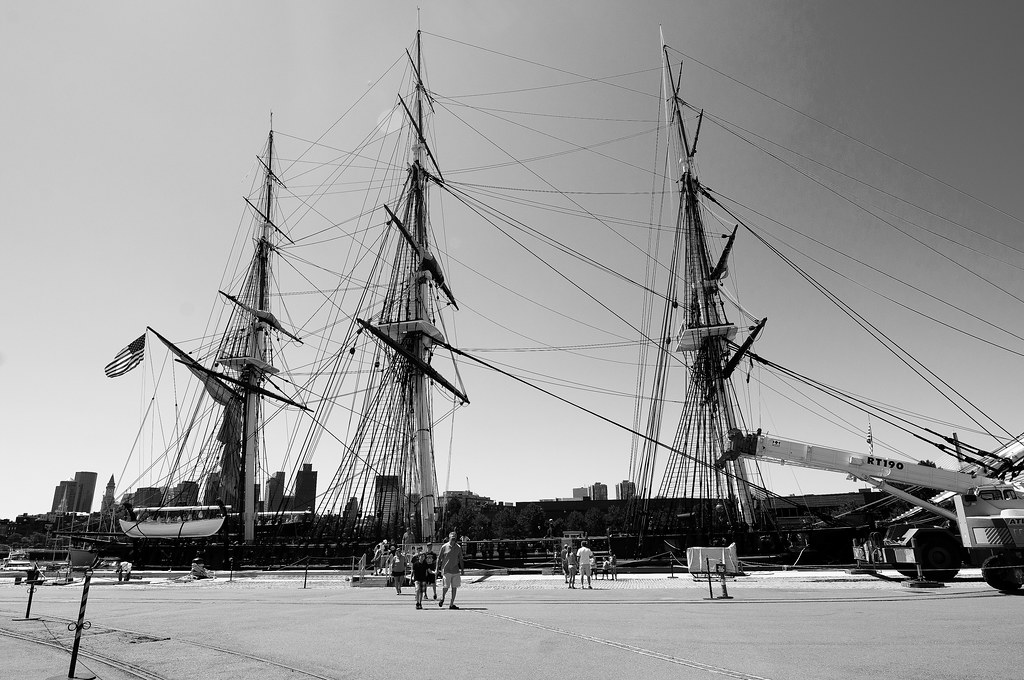
Nikon D300 – AF-S Nikkor 17-55mm 1:2.8G DX
By 1793 Piracy against American shipping interests had come to a head; eleven ships had been seized, their crew and cargo held for ransom by the Barbery Pirates. To combat this threat, the Federal Government, still wary of any standing military force, authorized the construction of six frigates under the terms of the Naval Act of 1794. These new heavy frigates were designed to be faster than the heavy ships of the line and outgun any existing frigates on the high seas. The keel of the Constitution was laid down on November 1st, 1794, in Boston. But peace was reached with the Pirates and Algiers in 1796, and under the terms of the Naval Act, constructions of the frigates were to cease. But President Washington seeing the value of these ships, and three nearly completed debated and funding continued for the three nearly completed ships. By the end of the 18th century, the United States Navy commissioned three new Frigates. The Constitution, the US Frigate United States (24), and the US Frigate Constellation (38), the Constitution being commissioned on September 20th, 1797, and took to the water on October 21st of the same year.
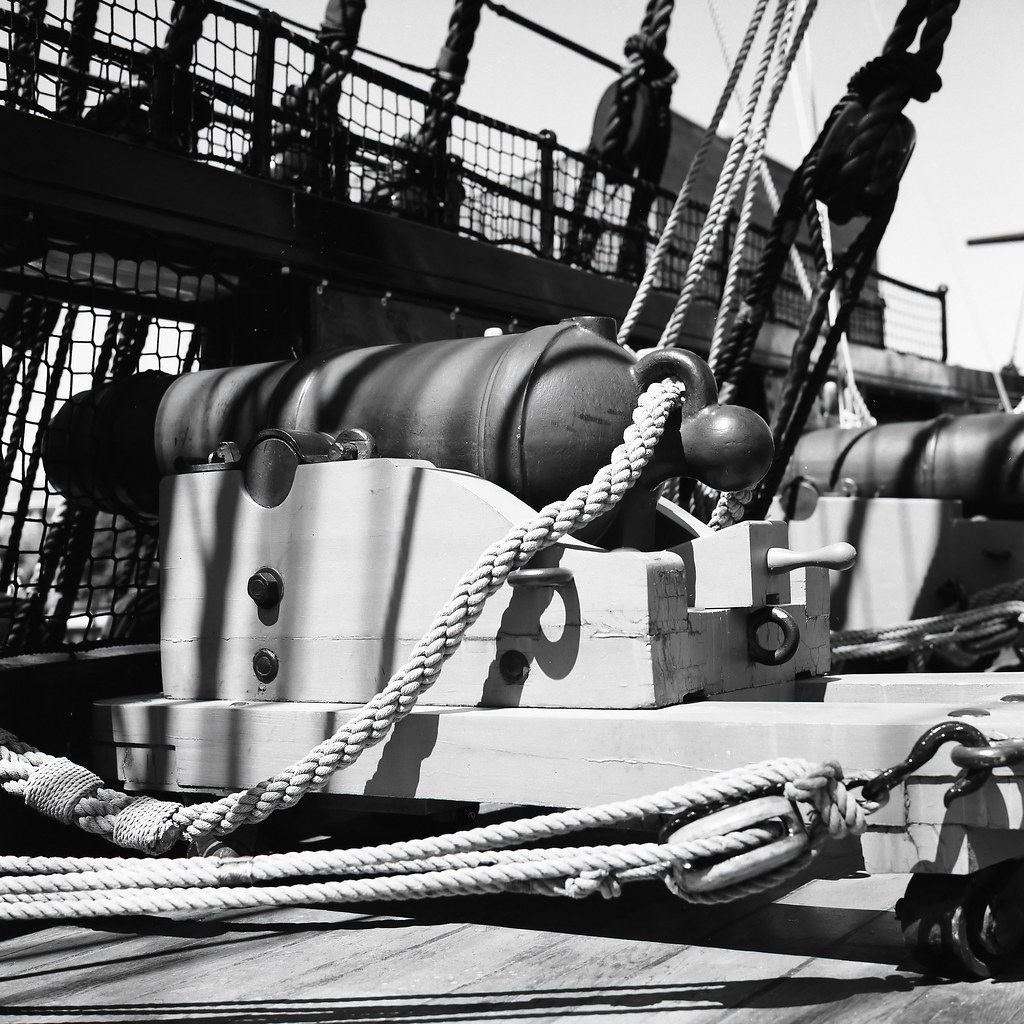
Rolleiflex 2.8F – Carl Zeiss Planar 80mm 1:2.8 (Green Filter) – Kodak TMax 100 @ ASA-100 – Blazinal 1+25 6:00 @ 20C
Through the first decade of the 19th century, the Constitution took part in several smaller conflicts against the French at the end of the 18th century and against the Barbery Pirates in 1805. She returned to Boston in 1807 to refit and repair. In 1811 she was tasked with bringing the new American ambassador to France, and on her journey home, she was shadowed by several British Warships. When the war was declared in June of 1812, the Constitution put to sea to begin hunting British ships on the shipping lanes. In August 1812, the Constitution encountered and engaged the HM Frigate Guerriere (38), a British fifth-rate frigate. Under Isaac Hull, the two ships engaged in fierce naval combat; eventually, the Guerrier’s mizzen mast was removed. The two ship’s riggings became entangled in close manoeuvres as they continued to fire broadsides into each other. But due to the unique construction of the Constitution, the British shots bounced off her hull. Huzzah! Her sides are made of iron, came the cry from the crew. Both ships sent boarding parties aboard, but neither side could take the other ship. With the Guerriere’s main mast also broken, the Constitution pulled off and then returned once the Guerriere attempted to engage. Hull taking this as a signal that they surrendered, sent a party to the British ship. Upon arrival, the Guerriere’s captain responded to the surrender inquiry by saying Well, Sir, I don’t know. Our mizzen mast is gone, our fore and main masts are gone-I think you might say we have struck our flag. Prisoners were taken, and the Guerriere was burned. Upon the Constitution’s return to Boston, the ship and crew were greeted as heroes, and the name Ironsides stuck.
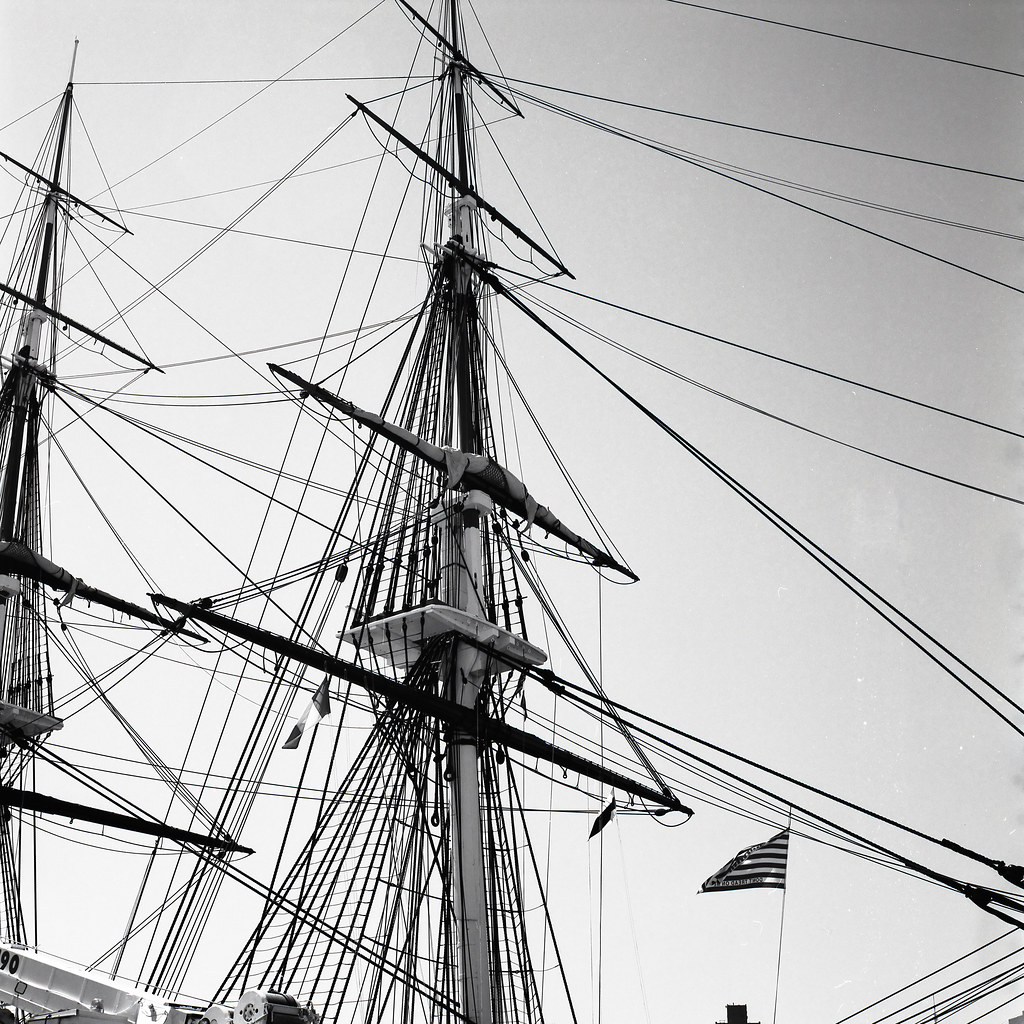
Rolleiflex 2.8F – Carl Zeiss Planar 80mm 1:2.8 (Green Filter) – Kodak TMax 100 @ ASA-100 – Blazinal 1+25 6:00 @ 20C
The victory over the Guerriere was the moral boost the United States Navy needed. The mighty Royal Navy could be beaten at their own game. The Constitution continued to cause havoc among the ships of the Royal Navy; some more notable engagements against the RN were the HM Frigate Java (38), HM Frigate Cyane (22), and the HM Frigate Levant (22). Upon receiving word that the war was over, the Constitution returned to her home port in Boston. Unlike her two sister ships, the Constitution was undefeated in battle. By 1820 she was refit for service as the flagship of the Mediterranean Squadron to defend American shipping interests against piracy. After her tour, she returned the Boston in 1829. Through the mid-19th century, she was used as a training vessel and was the only surviving ‘original six’ frigates by the end of the civil war. She was made sea-worthy again and sailed for Paris in 1878 for the Exposition. But upon her return, she was laid up in the Charleston Navy Yards, unfit for service.
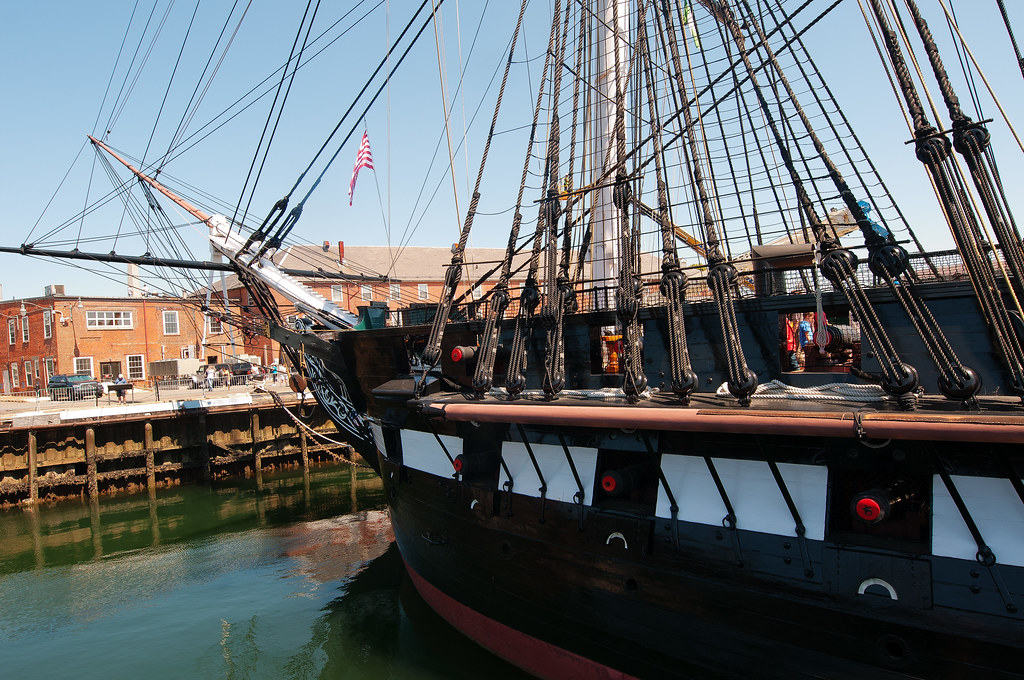
Nikon D300 – AF-S Nikkor 17-55mm 1:2.8G DX
Her future looked grim, but the Constitution, Old Ironsides, had taken upon a life of her own. She was the undefeated hero of the War of 1812. Congress agreed in 1900 that she should be restored but allocated no funds. In 1903 the Massachusetts Historical Society stated plainly that she should be restored to active service. The secretary of the Navy in 1905 went so far as to state that the Constitution should be used as target practice and allowed to sink. The public outcry swept the nation in 1906, and money was raised and allocated for her restoration. In 1907, she was reopened as a museum ship. But by 1924, she was again given a death sentence, a national fundraising campaign was undertaken, and in 1927 she entered the dry dock. Live Oak from a Florida Navy yard from an 1850 shipbuilding project that never happened, tools from Maine, and skilled tradesman arrived in Boston to work on Old Ironsides. And on the 1st of July 1931, she was restored and re-commissioned to the United States Navy. She was captained by a 20-year senior officer with the rank of Commander and crewed by select members of the USN. The Constitution went on a tour of the United States coastline. Repairs through the 1990s made the ship sailworthy again, and after extensive training, the USS Constitution sailed under her power at a speed of six knots (11 km/hr) in 1997. She again sailed on August 19th 2012, celebrating the 200th anniversary of her victory over the HMS Guerrier.
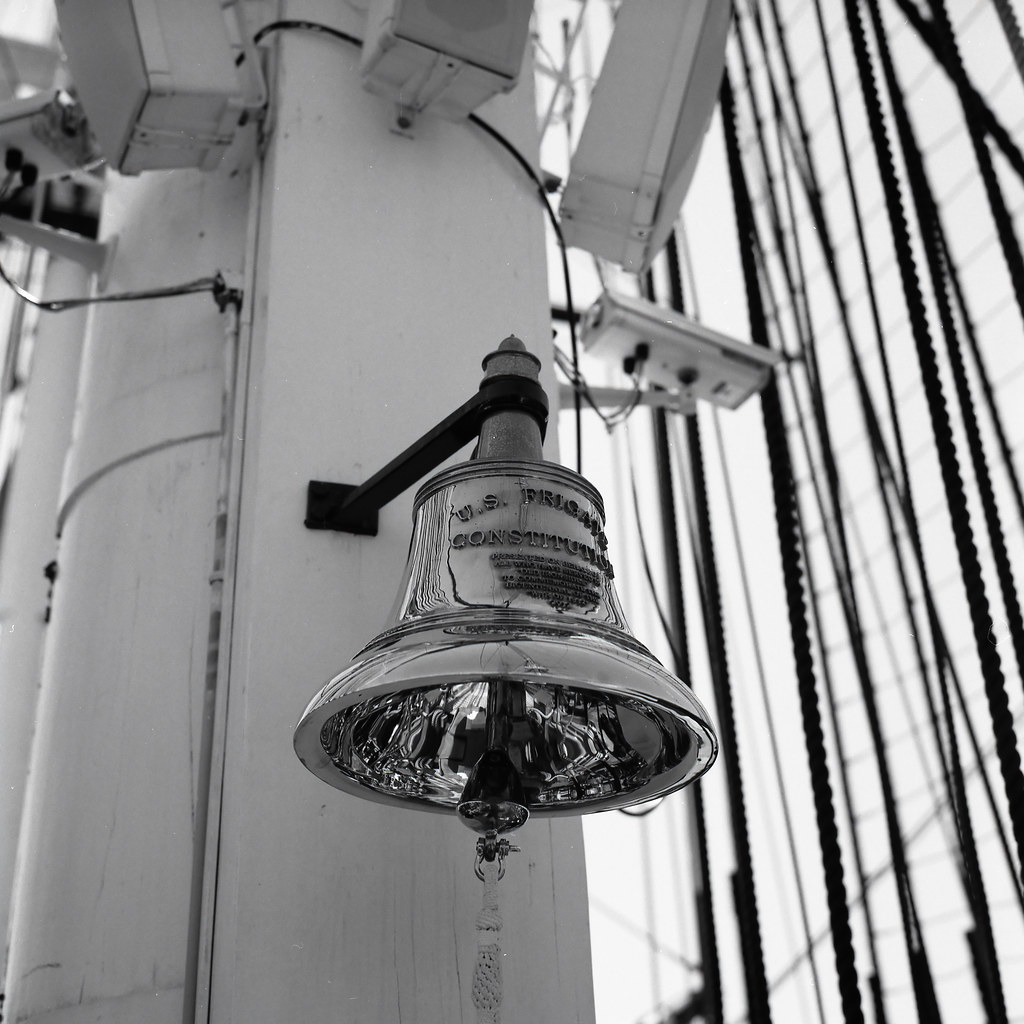
Rolleiflex 2.8F – Carl Zeiss Planar 80mm 1:2.8 (Green Filter) – Kodak TMax 100 @ ASA-100 – Blazinal 1+25 6:00 @ 20C
I have only scratched the surface of the history of this amazing ship, and I encourage you, my readers, to explore further the story of the Constitution! And if you’re ever in Boston, go and visit her. She remains today the oldest commissioned warship still afloat in the world. I hope to see her sail and salute next year on the fourth of July.
Written with Files from:
Web: www.history.navy.mil/ussconstitution/
Web: www.ussconstitutionmuseum.org/
This article and the journalist lost some credibility when he listed the Constitution as a 38-gun frigate. She was (and is) a 44-gun frigate. At the time of her launching there was a smaller class of 38-Gun frigates.
Good Afternoon; thank you for the correction. It’s been a long time since I last looked at this article. So there are bound to be errors. However, your method of correction leaves something to be desired. So allow me to return the favour. You also made some errors in your comment. First, this is a blog, not a newspaper, so referring to me (the author) as a journalist is in error. I love history and feel the story, more than the number of guns, is of greater importance. But I have corrected and noted that the Consitution carried 56 guns during the Anglo-American War of 1812.
Thank you !
My Great Grandfather Samuel Nicholson
was the first Commander of the USS Constitution.
I’m a member of the Daughters of the American Revolution, Chapter 5001SD, Black Hills, Rapid City.
I would appreciate it very much if you could gather any information about the captain ..
Thank you for your consideration.
Sincerely,
Janet
You’re welcome! I recommend reaching out to the Constitution museum in Boston. They have access to the ship’s records.